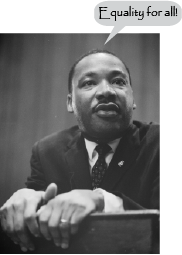Understanding equality, or sameness, is a universal theme in all areas of mathematics. When mathematicians say, "2 + 2 = 4," they mean that the two things on either side of the equal sign are literally the same thing: they are two ways of describing the same object. They're equal.

In mathematics, the objects we work with are usually numbers. The thing is, we can't usually see them (talk about imaginary numbers, huh?), and we're forced to make do with looking at their descriptions instead.
Somebody with too much free time might choose to write "(1 + 1 + 1 + 1) – (1 + 1 + 1) + 1 + (1 – 1 – 1) – (1 – 1) + (1 + 1)" instead of the significantly easier to read "3," even though they describe the exact same number. Way to mess with us.
Example 1
Identify the property exemplified here. Turkey Sandwich = Turkey Sandwich. |
Example 2
We're given that A = B and C = D. As a result, we state that A – C = B – D. This equation is an example of which property or properties? |
Example 3
If A = X, B = Y, and C = Z, then can we say that A(B + C) = ZY + XZ? |
Example 4
If A + B = C, then is it possible to claim that X(A + B) = CX? Which properties allow us or forbid us from doing so? |
Exercise 1
Give an example of the symmetric property.
Exercise 2
If we're given a puppy, what property allows us to say that puppy = puppy?
Exercise 3
If A⁄B = C⁄D, which statements would make this true?
Exercise 4
If X = Y and Y = 3, which properties allow us to say that 3 = X?
Exercise 5
If A = B and X = Y, which properties allow us to say that  ?
?
Exercise 6
If A = B, B = C, C = D, D = E, E = F, and F = G, which properties allow us to say that A(B + C) = DE + FG?